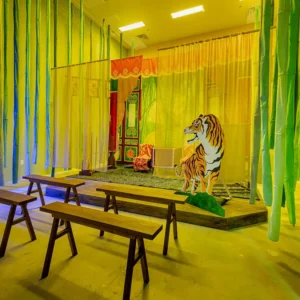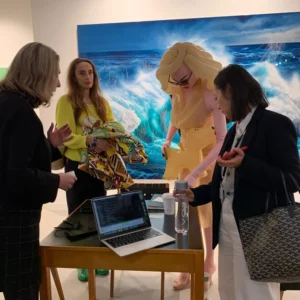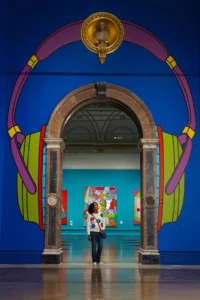The Princeton University Art Museum’s recent exhibition at the Art on Hulfish Gallery brings together photographers who draw inspiration from art history, particularly referencing old masters like Da Vinci and Van Eyck.
The show skillfully weaves historical threads with contemporary sensibilities, offering visitors an engaging and enlightening experience that caters to both intellectual and emotional engagement.
The curator’s intention is for visitors to not only appreciate the intricate layers of meaning within the artworks but also to find joy and humor in them. One standout piece is Vik Muniz’s imaginative 1999 photograph, a whimsical tribute to da Vinci’s Mona Lisa reimagined with peanut butter and jelly. This playfulness extends to other works as well, making it accessible and enjoyable for a broad audience.
The exhibition encapsulates the essence of art’s evolution while anchoring it firmly in the present. Amidst the historical references, a common theme emerges—the exploration of identity, a pursuit that remains as relevant today as it was in the periods being referenced.
Artists like Ori Gersht engage with this theme thoughtfully. Gersht’s video work, which substitutes a pomegranate for a grenade in a recreation of Juan Sánchez Cotán’s still life, carries powerful symbolism, reflecting the artist’s Tel Aviv childhood, where the Hebrew word for “pomegranate” also means “grenade.”
Among the multifaceted artworks, Jeanette May’s “NY Tech Vanitas: Dot Matrix” stands out. This contemporary take on the traditional still-life genre replaces opulent items with discarded technology—flip-phones, CD-ROMs, and antiquated printers—commenting on the ephemeral nature of technological progress. This transformation of familiar elements into poignant reflections on time underscores the exhibition’s ability to bridge the gap between historical legacy and current societal concerns.
Featured Image: Vik Muniz, After Warhol: Double Mona Lisa / Peanut Butter and Jelly (1999). Collection of MAC-Lima





